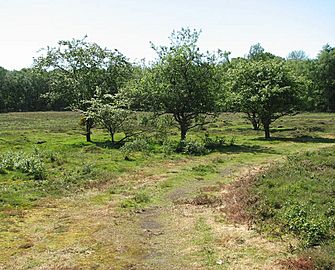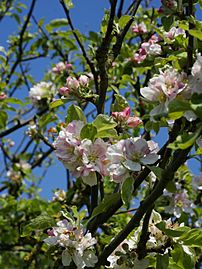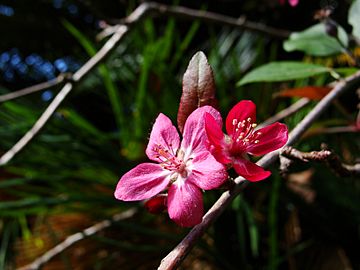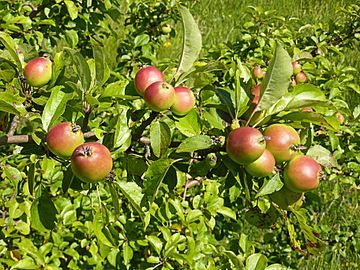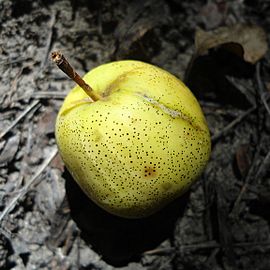European wild apple facts for kids
Quick facts for kids European wild apple |
|
|---|---|
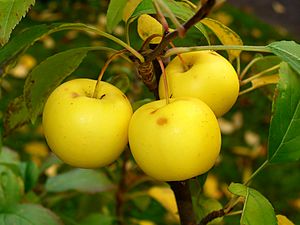 |
|
| Conservation status | |
| Scientific classification |
The Malus sylvestris, also known as the European crab apple, is a type of wild apple tree. It grows naturally across Europe. Its scientific name means "forest apple." These wild trees often have sharp thorns.
Contents
What Does the European Crab Apple Look Like?
Wild apple trees often have a wide, spreading top, making them look more like a large bush than a tall tree. They can live for a long time, usually 80 to 100 years. These trees can grow up to 10 meters (about 33 feet) tall. Their trunks can be quite thick, measuring between 23 and 45 centimeters (about 9 to 18 inches) across.
The European crab apple needs a lot of sunlight to grow well. Because of this, you often find it in specific places. It grows at the sunny edges of forests, in hedges around farms, or in other challenging spots. The flowers of this tree have both male and female parts. This means they can produce seeds on their own. Insects, like bees, help to pollinate these flowers.
How Wild Apples Relate to Apples We Eat
For a long time, people thought the European crab apple was the main ancestor of the apples we eat today. These are called cultivated apples (Malus domestica). However, scientists later discovered that most cultivated apples actually came from a different wild apple species. This species is called Malus sieversii and it grows in Central Asia.
But recent DNA studies have shown something interesting. The European crab apple still played an important role in shaping the apples we eat. Its genes mixed with the genes of cultivated apples over many years. This process is called introgression, which means genes from one species moved into another. The studies found that the European crab apple contributed a lot of its genes to cultivated apples. In fact, today's cultivated apples are often more closely related to the European crab apple than to M. sieversii. However, the purest types of cultivated apples still show more of their M. sieversii ancestry.
Where Does the European Crab Apple Grow?
This apple species originally came from Central Asia, in an area that is now Kazakhstan. Today, the European crab apple is quite rare. However, it is native to most European countries. You can find it scattered across the landscape, either as single trees or in small groups.
Animals That Eat Crab Apple Leaves
The leaves of the European crab apple tree are a food source for some insects. For example, caterpillars of the twin-spotted sphinx moth (Smerinthus jamaicensis) eat them. The leaves might also be eaten by the hawthorn moth (Scythropia crataegella).
Gallery
-
Close-up of fruit and leaves (Southeast Michigan)
See also
 In Spanish: Manzano silvestre para niños
In Spanish: Manzano silvestre para niños



